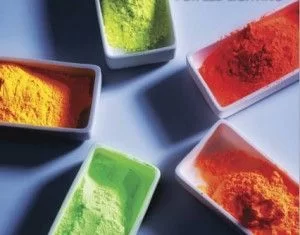White lighting LEDs are almost universally a combination of a blue light-emitting InGaN die and a phosphor that steals some of the blue light and converts it into a broad spectrum peaking at yellow or amber.
The combination of blue light and yellow light looks white to humans.
For interior lighting, there is increasing interest in LEDs with a more balanced spectrum, and with more red to reduce the colour temperature.
A useful, if flawed, measure of colour rendering capability is colour-rendering index (CRI) where sunlight scores 100 and cool white LEDs score, very roughly, 70-80.
One way to improve CRI, and get a warmer white, is to mix in a second phosphor, and even a third, to take more of the blue and turn it into red.
“With a three phosphor strategy, including one red and one 650nm deep red, we can get 98CRI and ‘R9′ 99CRI,” said Carey.
R9 is a saturated red colour – the colour of meat and some fruit – and is not used in calculating normal CRI.
If lighting groceries, or Ruby Woo lipstick, is important, you need to think about the rendering of this red. R9 99CRI means this particular LED scores 99 out of 100 doing that.
Standard red phosphors are ‘red nitrides’, producing oranges and reds from 620 to 670nm.
Intematix has a range of red nitrides and, to fill out the middle of the spectrum, it has ‘green aluminates’ (515-560) branded ‘GALs’ for which it has patents.


